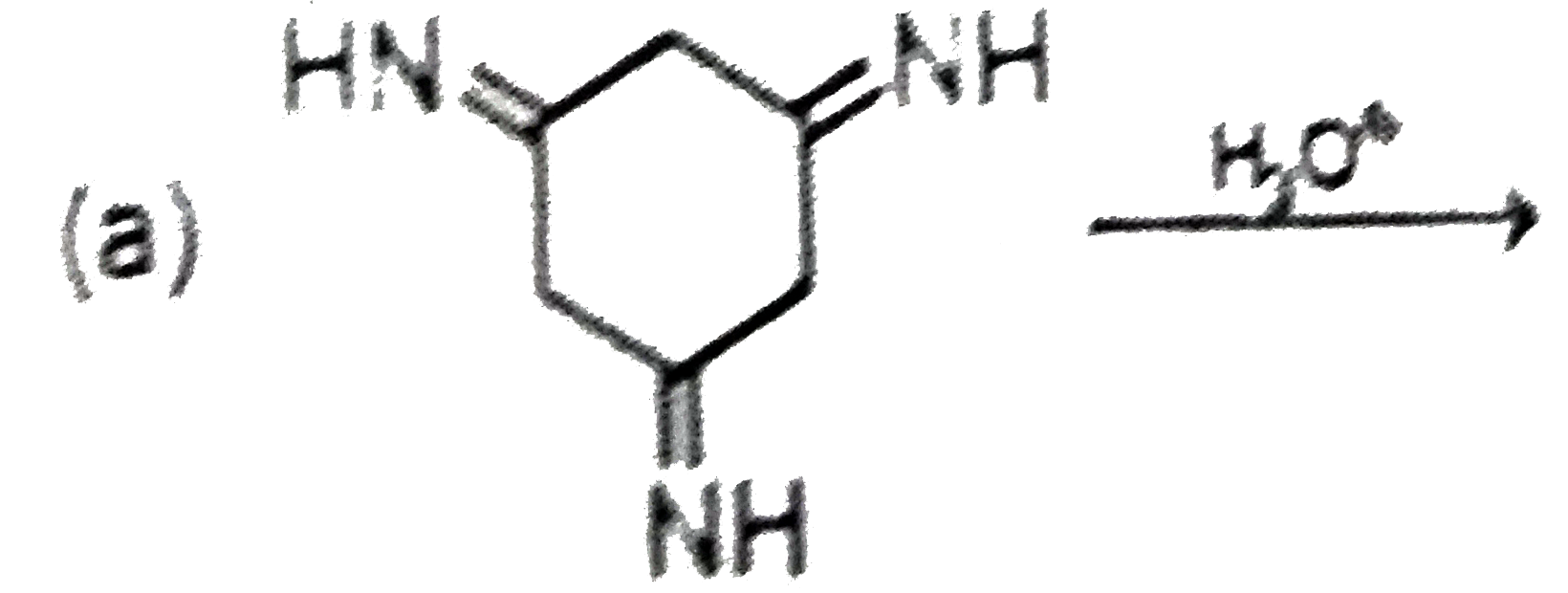In the following reaction
PhCH=CH2B2H6−−−−−−−→H2O2/OH−(?) (Where Ph is Phenyl)
The product formed is
PhC∣OHH−CH3
PhCH2−CH2−OH
PhCH2CHO
Ph−C∣∣O−CH3
To solve the given reaction step by step, we will analyze the hydroboration-oxidation process involving the compound phenylpropene (Ph CH=CH2) and the reagents B2H6 (diborane), H2O2, and OH^(-).
Step 1: Identify the Reactants
The reactant is phenylpropene, which has the structure Ph-CH=CH2. The reagents are diborane (B2H6) and hydrogen peroxide (H2O2) in a basic medium (OH^-).
Step 2: Hydroboration
In the first step of the hydroboration-oxidation reaction, diborane (B2H6) adds across the double bond of the alkene. According to the anti-Markovnikov rule, the boron atom (B) will attach to the less substituted carbon (the terminal carbon), while hydrogen (H) will attach to the more substituted carbon (the internal carbon).
- The double bond (C=C) in phenylpropene breaks, and we add B and H:
- The terminal carbon (CH2) will bond with boron (B).
- The internal carbon (CH) will bond with hydrogen (H).
The structure after hydroboration will be:
- Ph-CH(CH3)-B
Step 3: Oxidation
In the second step, we treat the product from the hydroboration with hydrogen peroxide (H2O2) in a basic medium (OH^-). This step will convert the boron atom into a hydroxyl group (OH).
- The boron (B) will be replaced by a hydroxyl group (OH):
- The structure will now be Ph-CH(CH3)-OH.
Step 4: Final Product
The final product formed after the hydroboration and oxidation steps is:
- Ph-CH2-CH2-OH (where the OH group is attached to the terminal carbon).
Conclusion
The product formed from the reaction of phenylpropene with B2H6 followed by H2O2 and OH^- is an alcohol with the structure:
- Ph-CH2-CH2-OH.
The reactant is phenylpropene, which has the structure Ph-CH=CH2. The reagents are diborane (B2H6) and hydrogen peroxide (H2O2) in a basic medium (OH^-).
In the first step of the hydroboration-oxidation reaction, diborane (B2H6) adds across the double bond of the alkene. According to the anti-Markovnikov rule, the boron atom (B) will attach to the less substituted carbon (the terminal carbon), while hydrogen (H) will attach to the more substituted carbon (the internal carbon).
- The terminal carbon (CH2) will bond with boron (B).
- The internal carbon (CH) will bond with hydrogen (H).
- Ph-CH(CH3)-B
In the second step, we treat the product from the hydroboration with hydrogen peroxide (H2O2) in a basic medium (OH^-). This step will convert the boron atom into a hydroxyl group (OH).
- The structure will now be Ph-CH(CH3)-OH.
The final product formed after the hydroboration and oxidation steps is:
- Ph-CH2-CH2-OH (where the OH group is attached to the terminal carbon).
The product formed from the reaction of phenylpropene with B2H6 followed by H2O2 and OH^- is an alcohol with the structure:
- Ph-CH2-CH2-OH.
Topper's Solved these Questions
- QUESTION PAPER 2022 TERM 1 SET 1BOOK - XII BOARDS PREVIOUS YEARCHAPTER - QUESTION PAPER 2022 TERM 1 SET 1EXERCISE - SECTION -B
24 Videos
- QUESTION PAPER 2022 TERM 1 SET 1BOOK - XII BOARDS PREVIOUS YEARCHAPTER - QUESTION PAPER 2022 TERM 1 SET 1EXERCISE - SECTION-C
6 Videos
- POLITICAL SCIENCEBOOK - XII BOARDS PREVIOUS YEARCHAPTER - POLITICAL SCIENCEEXERCISE - SECTION-E PART-B
3 Videos
- QUESTION PAPER 2022 TERM 1 SET 2BOOK - XII BOARDS PREVIOUS YEARCHAPTER - QUESTION PAPER 2022 TERM 1 SET 2EXERCISE - SECTION -C
6 Videos
Similar Questions
Knowledge Check
Identify X in the following reaction CH3−CH=CH2B2H6−−−−−−−→H2O2/OH−'X'
APropanoneBPrapan-1-olCPropanalDPropan-2-olThe product formed in the reaction
PhCH=CH2B2H6−−−−−−−→H2O2/OH−isAPhCH2CHOBPhCH2CH2OHCPhCHOHCH3DPhCOCH3CH3CH2CH=CH2B2H→ZH2O.H2O2.
What is Z?ACH3CH2C∣OHHCH3BCH3CH2CH2CHOCCH3CH2CH2CH3DCH3CH2CH2CH2OH
Write the product in the following reaction
CH2CH=CH−CN(I)DIBAL−H−−−−−−−−−→(ii)H2O
View SolutionComplete the following
(a)
(b) Ph−O−CH=CH2H3O⊕−−−→A+B
View SolutionIdentify the product (P) : Ph−C≡CHO3−−−−−→Zn−H2OP
View SolutionCH3CH2CH=CH2B2H6−−−−−−−−−−→H2O.H2O2.OH−Z
What is Z?
View SolutionIn the sequence of reaction .
CH3−CH2−CH=CH2(i)B2H6/THF−−−−−−−−−−→(ii)H2O2/NaOHAconc.H2SO4−−−−−−→BH3O+−−−→C
In above reaction A and C are respectively
View Solution
